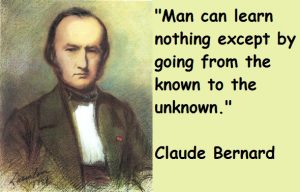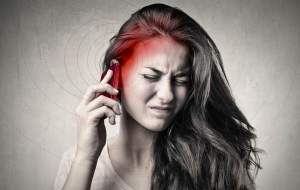How does a gymnast balance on a balance beam?
Think of your center of balance and keep it in the arc of your foot while staying focused to the very end of the beam 🙂
Balanced diet or balance diet?
In fact, balance is a noun and balanced is an adjective. The correct English is “balanced diet.” A balanced diet consists of a healthy combination of foods…. in all the food groups. These include vegetables, fruits, grains, dairy, protein and oils. Vegetables: Get plenty of these; preferably unsalted and not fried. Try to varythe types of vegetables you eat. Fruits: Like vegetables, these contain healthy vitamins and antioxidants.They also have fructose, so don’t overdo it. http://www.algarcia.org/AnimationPhysics/BalanceTutorial.pdf
Get plenty of these. Whole grain products such as whole wheat bread, brown rice and oatmeal are the healthy types. Dairy: The calcium in milk is also an essential part of a balanced diet. Dairy products including cheese and yogurt count towards your dairy needs. Proteins: This group includes meat (preferably lean), beans, fish, nuts and seeds. Try to eat a combination of each of these foods throughout the week. Oils: Oils also play an important role because they allow us to consume unsaturated (healthy) fat. There are certain foods that count towards your healthy fat such as almonds, salmon, sardines and avocados. Olive oil is very healthy.
What is the natural biophysics?
As much as we distinguish in allopathic medicine and natural medicine.
I would also like to define it in the field of biophysics, a field little explored in reality, there is not only the common cell biophysics, but also the “natural biophysics” which is the search for the intrinsic logic of nature and mechanisms of it specifically in the field of health.
This is opening up new horizons for developing treatment of degenerative and chronic diseases, which to date have no solution except pharmaceutical palliatives that lead to long term intoxication of the patient. Natural biophysics always tries to explain through pure logic since nature always is. An inconsistency or anomaly is usually the result of previous erroneous axioms, because nature uses the same building blocks and with the same formula in all its natural process.
The basic principles should always be simple and science is increasingly difficult getting lost in details without knowing irrefutably the bases. There are many doctorates in physics but none can explain even the most basic things like why gravity or a magnet works. There are many professors and doctorates in medicine but no one knows. . . why a body gets sick with certain pathogens and other not, in the official dictionary of diseases, the renowned Merck Manual®, most chronical diseases are of “unknown origin.”
We must seriously ask ourselves what kind of mainstream medicine is this…?
In order to advance we have to do the right question.
The key question therefore is: What is the lowest common denominator of all diseases?
The denominator of all disease is the lack of energy that creates imbalance in the body.
(I = EQ – E)
It’s a very simple equation where I represents the state of disease, EQ balance and E energy. If treatment is able to get more E the result is equivalent to EQ balance and therefore health.
This lack of energy is not only meant at the biochemical level but also at biophysical and psychological level. A trauma for example, draw a lot of energy from the body regardless of whether it was a physical or a psychological trauma, such as the death of a family member.
The body needs to be balanced to be healthy something already discovered by Claude Bernard (1813-1878) who had the idea that the body’s healing capacity depends on the internal environment. https://andreaskalcker.com/en/diseases/
Science explains complex life, sometimes so complex that nobody realizes incongruities. They are the same inconsistencies that can give us a clue to the truth, and this truth will teach that the earth is not flat ( perhaps…:).
Science should be focused in the future on if their bases are actually valid and correct since a laureate prize does not mean precisely that a theory is absolutely true, and if you do not believe can find documentation on the Nobel António Egas Prize Moniz “for his discovery of the therapeutic value of lobotomy in certain psychoses.”
Let’s concentrate on the basics.
Our body and our cells obtain energy through a combustion process. This combustion or oxidation provides us with energy. We burn fats, carbohydrates and proteins, but we are also capable of burning toxins. All of us are familiar with the expression “I am going to burn some toxins” when somebody goes for an exercise and provides oxygen & more oxygen to the fire.
There is a simple way to prove this: we can see this process when we have a barbecue. When we blow the coal, temperature increases and so does combustion. We can see it in combustion engines. When we want more efficiency consuming the same amount of fuel, we obtain that power through a turbo compressor, which is no more than a fan blowing extra oxygen to the combustion engine. This way, we obtain much more potency with the same amount of fuel.
We use oxygen constantly from the moment we are born, therefore, oxygen can be much more crucial than what we currently think. At medical school, we have been told that free radicals are harmful to the body according to Denham Harman’s theory. However, we also don’t need a lot of brains to realize that people who regularly practice sport consume more oxygen but somehow are also healthier, which is the opposite of what the “oxidative stress” theory claims.
Actually, this theory was debunked by Prof. Dr. Michael Ristow *, who won the German research award for this work on oxidative stress research. Mitohormesis demonstrates an increase in mitochondrial activity when there is low potency oxidative stress.
However, nobody has rewritten the books to rectify the false theory of free radicals…
Why? Chlorine dioxide in all its forms provides oxygen to the interstitial tissue and to all the body fluids, activating the mitochondria, which in turn generate more energy. This energy allows the body to recover and heal from most diseases. Oxygen is essential and the free radical concept, as it has been promoted in the past, is erroneous.
The human body is not a Petri dish in a lab.
Everything interacts with everything else.
https://www.bxprotocol.com/programs/onsite/
A Pioneer in the Study of Carbohydrate Metabolism.
Where does the chemical energy to produce ATP come from?
The food you eat. It contains calories, right? Calories are simply units of energy. http://education.med.nyu.edu/courses/molecular/carbohydrates06/carbohydrates.pdf
I will try to simplify so as not to go into a lengthy biochemistry lesson. Essentially, carbohydrates and lipids are broken down during the metabolic pathways to produce ATP via such processes as anaerobic and aerobic glycolysis, the citric acid cycle (krebs cycle), and the electron transport chain. Think of these processes as a Willy Wonka factory machine.
You drop in a glucose molecule (with lipids and carbohydrates and they are essentially broken down to before they hit the first steps in ATP production) and at the end of the mechanical “assembly line,” you will have ATP molecules.
Why is ATP called the energy currency of the cell?
Because it is responsible for the transfer of energy from one set of biochemical reactions to another. Gtp and Utp are sometimes also used. Atp delivers energy wherever energy is needed in the Cell. Atp (Adenosine tri-phosphate) is a molecule that can store energy.
The bond between terminal phosphate: the second phosphate is a high-energy bond.
When it is broken (Atp is turned into Adp and Pi) this energy is released and can be harnessed by the Cell. During the breakdown of sugars in the body, the energy from the sugars are stored in Atp molecules which can be used later.
How does ATP supply energy to the cell?
ATP (adenosine triphosphate), also contains three phosphate groups linked through phosphoanhydride bonds. To spell this out, a phosphate group is a phosphorus atom surrounded by four oxygen atoms.
An phosphoanhydride is a bond in which one oxygen is shared by two phosphorus atoms of different phosphates, acting as a link between them. So the anhydride looks like this: P-O-P, with three additional oxygens bound to each phosphorus.
Now the phosphoanydride bond is very high in potential energy. Phosphate groups have a large negative charge and like charges repel, so the phosphates do not like being next to each other. However, the anhydride bond locks them together.
Naturally, though, this takes work and so you have to put in some energy in order to form this bond. Once the bond is broken though, the phosphates quite happily break apart from one another, releasing that energy which was put in order to keep them together. Imagine a spring: in order to compress it with your hands it takes energy. However, once you allow the spring to return to its preferred state, it will exert a force on your hands, pushing them apart. It’s a similar idea with ATP.
In addition, the energy from ATP is often funneled down to many subsequent reactions by transfer of phosphates (a process called phosphorylation). With this, initial energy is released from the removal of a phosphate from ATP.
However, some of this energy is devopted to attaching the free phosphate to another molecule, reforming the phosphoanhydride somewhere else. While, this too is a high energy bond, it is also somewhat weaker than ATPs since some energy went towards producing.
This process of removing the phosphate and releasing energy followed by attaching the phosphate to another molecule utilizing some of that energy continues until there simply is not enough energy left to do any meaningful work. –>Camille Llamas 😉
Homeostasis is the tendency of an organism to maintain stable internal conditions amid environmental change. Reproduction is the process through which a species produces offspring. Commensalism is the relationship between two organisms in which one benefits and the other neither benefits nor is harmed. Metabolism refers to the physical and chemical changes in an organism which release or use energy.
Claude Bernard, generally acclaimed as the greatest physiologist of all time, succeeded François Magendie as Professor of Medicine at the Collège de France. Bernard interned in medicine and surgery before serving as laboratory assistant (préparateur) to Magendie in 1839. Three years later, he followed Magendie to the Hôtel-Dieu hospital in Paris. For the next 35 years, Bernard discovered fundamental properties about physiology.
French physiologist, born July 12, 1813, Claude Bernard died on February 10, 1878. https://evolutionnews.org/2017/09/in-a-new-book-scott-turner-explores-biologys-second-law/
Homeostasis is the key process with which Bernard is associated. He famously said, “La fixite du milieu interior est la condition de la vie libre.”
Translated: “To have a free life, independent of the external environment, requires a constant internal environment”. https://www.ncbi.nlm.nih.gov/pmc/articles/PMC1921451/
This is still the underlying principle of homeostasis today.
“Bernard was right; the pathogen is nothing; the terrain is everything.” — these are Louis Pasteur’s deathbed words!!!
Internal Environment and Homeostasis
The body is surrounded by the external environment that provides nutrients and oxygen that are necessary for life. The external environment receives waste materials from the body. The body has an internal environment which is maintained more or less constant by certain biological mechanisms. The skin separates the internal environment from the external environment.
The internal environment is water-based in which the cells of the body exist. A fluid known as interstitial fluid or tissue fluid bathes the cells. Oxygen and nutrients from the internal transport systems reach the cells through the interstitial fluid. As Waste products move through the interstitial fluid to transport systems which excrete them out of the body.
The cell membrane surrounds the cell. It acts as a barrier and regulates the substances entering and leaving the cell. The cell membrane is semi-permeable i.e. and allows certain types of molecules to pass through but blocks others. Smaller molecules can pass through the cell membrane easily than larger molecules. Some molecules pass through more easily than others. Due to the selective nature of the cell membrane, the intracellular fluid has a different chemical composition than the interstitial fluid.
Homeostasis: The internal environment of the body is maintained more or less constant and within a narrow range of limits. This is called homeostasis.
Homeostasis literally means ‘unchanging’. However, it should be noted that the internal environment is not exactly unchanging. It is dynamic but is maintained within particular limits. Many diseases involve a disturbance of homeostasis.
There are many factors in the internal environment that are maintained within narrow limits. Some of these factors include:
Temperature
Water and electrolyte concentration
pH of body fluids
Blood glucose level
Blood pressure
Blood and tissue oxygen and carbon dioxide levels
There are control systems in the body which detect and respond to changes in the internal environment and maintain homeostasis. There are three parts in any control system: The detector or sensor detects environmental stimuli and sends this information to the control centre. The control centre receives and processes the information supplied by the sensor. It signals the effector to respond to the stimuli. The effector responds to the commands of the control centre and opposes or enhances the stimulus.
Homeostatic imbalance occurs when the body is unable to regulate a physiological variable within the normal range. If homeostasis is not maintained, an abnormal state results. Which can detrimental to the well-being of the body or even be fatal.
Human Biofield
The human body emits low-level light, heat, and acoustical energy; has electrical and magnetic properties; and may also transduce energy that cannot be easily defined by physics and chemistry. All of these emissions are part of the human energy field, also called the biologic field, or biofield. However, no agreement has been reached in the scientific community on the definition of the biofield.
Various approaches have been submitted by this author (Rubik, 1993, 1997, 2002b) and other authors [Popp (1996); Tiller (1993); Welch (1992); Welch and Smith (1990); and Zhang (1995, 1996)]. Most research has focused on electromagnetic aspects of the biofield.
Biology has been preoccupied with its molecular revolution that focuses on structure-function relationships in biochemistry. This effort culminated in the Human Genome Project whereby teams of scientists from around the world have mapped all the genes in human deoxyribonucleic acid. Most of the scientific effort and funding remains in molecular biology.
By contrast, only a small number of scientists worldwide have worked to understand the energy fields of the human body. Moreover, measuring the biofield and understanding its role in life are more difficult than the study of more tangible phenomena, and the funding for the former has been extremely scarce.
Therefore scientific advances in biofield research have been few, and biofield science remains a frontier area ripe for exploration. If we try to pick out any thing by itself, we find it hitched to every thing else in the universe” ~ John Muir, 1911.
The biofield is also elusive. We cannot isolate it or analyze it comprehensively.
As John Muir wrote, “if we try to pick out any thing by itself, we find it hitched to every thing else in the universe” (Muir, 1911). For a field, this connection is especially true, given that, regardless of its source, it travels outwards to infinity, interacts with other fields by superposition, and interacts with matter along the way. Additionally, phenomena such as resonance can occur, involving an energetic coupling of, or oscillation within, matter.
The fields of the human body may also be influenced by the fields of nearby organisms, the biosphere, and even the earth and cosmos, especially geo-cosmic rhythms.
From a theoretical perspective, we cannot calculate the human biofield from first principles because of its dynamic aspects and enormous complexity.
Nonetheless, we can measure certain aspects of the biofield and observe its footprints via novel technologies. The human biofield may carry novel information of diagnostic and predictive value for medicine.
Thus new technologic developments and methodologic improvements in measuring the biofield should be a central aim of health-related research. By measuring various aspects of the biofield, we may be able to recognize organ and tissue dysfunctions even in advance of diseases or symptoms and treat them appropriately so as to eradicate them.
We may also be able to use biofield measurements to predict whether the effect of a particular course of therapy will be effective or ineffective, depending on whether it improves or thwarts the biofield.
This possibility is especially true for the CAM therapies, which, in principal, often evoke a shift in response to extremely small stimuli that harmoniously work with the human body’s natural dynamics to restore balance.
Conventional science and also medicine have long used the electrocardiogram (ECG) and the electroencephalogram (EEG) to assess physiologic function of heart and brain, respectively. The heart produces coherent contraction of numerous muscle cells, also resulting in vigorous electrical activity.
In fact, the heart makes the greatest contribution to the electromagnetic, as well as the acoustic, human biofield. The brain’s activity contributes to a lesser extent to the biofield because its field emission is weaker than that of the heart. The ECG was first developed in 1887 and records the electrical activity from different areas of the heart. The EEG was developed in 1875 and records electrical activity from the various brain regions by using multiple electrodes on the head.
In addition, corresponding magnetic field measurements of the heart & brain have been discovered, which are the magnetocardiogram (MCG) and the magnetoencephalogram (MEG), respectively.
However, the magnetic fields of the body are very low level and typically require specialized equipment such as super-conducting quantum interference devices (SQUIDs) that are expensive to operate. Nonetheless, such magnetic field measurements of the body reveal more information than the electrical measurements, especially if also coupled with three-dimensional resolution, as in the case of MEG.
For the latter, localizing the activity of a region of the brain approximately the size of a pea is possible. Additionally, some of the more recently developed medical scans, such as functional magnetic resonance imaging and positron emission tomography, can also be used as indirect indicators of electromagnetic activity.
Galvanic skin response (GSR) measures the electrical conductance between two electrodes placed on the skin. This value is a mainstream measure that is used in lie detectors to help determine veracity and in biofeedback technology to help promote relaxation.
The human body is a strong emitter of infrared radiation, on the order of 100 watts, and visualization of this emission is used in medical imaging. Thermography uses an infrared camera and are associated software system to visualize the pattern of infrared emission, which we cannot see directly but experience as heat.
This method can detect changes as small as 0.01° C in the human body. Thermography can detect acute and chronic inflammatory conditions. This method is documented by many research studies to show toxic accumulations, tumors, and other diseases, often much earlier than x-ray mammography or other imaging procedures, for example, in the case of breast thermography (Amalu et al, 2006).
Typically, thermography is used to locate hot spots and left-right imbalances correspond to problem areas. However, the actual temperature and emissions pertaining to infrared portion of the human biofield have been considered much less important thus far to some clinicians and investigators.
Thermography is also used before and after therapy to visualize its influence, as for example in the case of infrared photonic treatment to look for improvements in the symmetry of the emission patterns after treatment. Thermography is now an accepted diagnostic procedure in medicine.
In summary, various strategies for measuring the human biofield include measurements of biophoton emission, as well as induced light emission; measurements on practitioners performing biofield therapy and on patients receiving biofield therapy; and bioassays for biofield therapy, as mentioned previously. Additionally, measurements of the electric or magnetic fields (or both) directly from the human body, especially from the acupuncture points, have also been developed.
Besides the veritable energies of the biofield discussed thus far, the human biofield may also consist of other putative energies as well, more subtle than the energy fields presently known in physics. In relation to this possibility. . . is a less common form of therapy known as distant healing, in which the practitioner and patient are in different locations, ranging from many feet to many miles away.
Invoking electromagnetic fields as causal in distant healing is impossible because electromagnetic energies diminish rapidly over distance, varying as the inverse of the square of the distance. Nonetheless, many biofield practitioners, including Reiki and external qi therapists, often learn and practice both local and distant healing.
Distant healing, which is often combined with spiritual healing and prayer, may involve no energy transfer whatsoever if it occurs by the principle of quantum nonlocality, or it may involve a putative energy not yet identified in science. However, in this chapter, we will address only specific aspects of the human biofield that are tangible and can be measured. We will also focus only on local biofield therapy.
Devices and Techniques Used to Measure the Biofield
Various devices have been developed that claim to assess aspects of the biofield, most of them electromagnetic in nature. That this area of research is in its infancy, with inadequate funding, no ongoing government sponsorship, and developed by a small number of people working largely in isolation, must be pointed out.
Thus, not surprisingly, several issues remain to be resolved.
Here, we describe a few of the devices and techniques that are being used in biofield research or the clinic that appear promising but that need further substantiation to become accepted.
These techniques fall into three categories: (1) high-voltage electrophotography, (2) acupuncture point conductivity measurements, (3) and biophoton measurements.
High-Voltage Electrophotography: the Gas Discharge Visualization Camera
The gas discharge visualization (GDV) camera, developed by the Dr. Korotkov Co., St. Petersburg, Russia, is perhaps the best-known form of contemporary high-voltage electrophotography based on the Kirlian effect (Kirlian and Kirlian, 1961) and was first discovered in Russia in 1948. Kirlian photography was not introduced to the West until the 1970s because of communication difficulties during the Cold War.
This digital camera, introduced in the West in the late 1990s by its inventor, physicist Dr. Konstantin Korotkov, comes with software and offers the advantage of using a lower voltage than conventional Kirlian photography… that is not felt… as an electric shock by subjects.
Factors that Encourage the Dangers of Electromagnetic Radiation.
Though every person’s cells are affected by electromagnetic radiation, each is affected at different ‘speeds’. Here are some of the factors that encourage a faster or stronger reaction to EMF exposures.
High stress levels
Low iodine levels
Heavy metal toxicity
Having Lyme disease
Weakened immune system
High total EMF exposure (How full is your radiation ‘cup’?)
One or more single incident of very strong exposure
Having other pre-existing health problems
http://www.best-emf-health.com/dangers-of-electromagnetic-radiation.html




